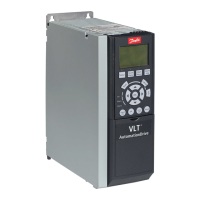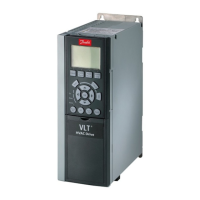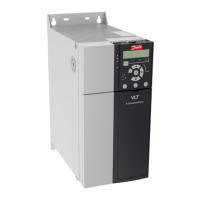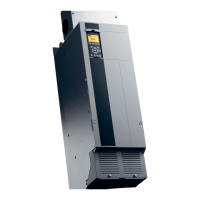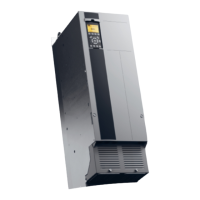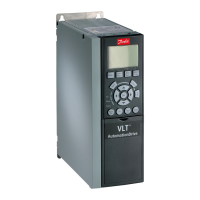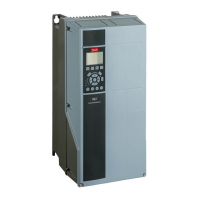3.5.7 3-7* Ramp 4
Configure ramp parameters, see 3-4*.
3-70 Ramp 4 Type
Option: Function:
Select the ramp type, depending on requirements for acceleration and deceleration. A linear ramp
will give constant acceleration during ramping. An S-ramp will give non-linear acceleration, com-
pensating for jerk in the application
[0] * Linear
[1] S-ramp Const Jerk Accelerates with lowest possible jerk.
[2] S-ramp Const Time S-ramp based on the values set in par. 3-71
Ramp 4 Ramp up Time
and par. 3-72
Ramp 4 Ramp
Down Time
.
NB!
If S-ramp [1] is selected and the reference during ramping is changed the ramp time may be prolonged in order to realize a jerk free
movement which may result in a longer start or stop time.
Additional adjustment of the S-ramp ratios or switching initiators may be necessary.
3-71 Ramp 4 Ramp up Time
Range: Function:
Application
dependent*
[Application dependant] Enter the ramp-up time, i.e. the acceleration time from 0 RPM to the rated motor speed n
s
. Choose
a ramp-up time such that the output current does not exceed the current limit in par. 4-18
Current
Limit
during ramping. The value 0.00 corresponds to 0.01 sec. in speed mode. See ramp-down time
in par. 3-72
Ramp 4 Ramp Down Time
.
Par
. 3 − 71 =
t
acc
s
x
n
s
RPM
ref
RPM
3-72 Ramp 4 Ramp Down Time
Range: Function:
Application
dependent*
[Application dependant] Enter the ramp-down time, i.e. the deceleration time from the rated motor speed n
s
to 0 RPM.
Choose a ramp-down time such that no over-voltage arises in the inverter due to regenerative
operation of the motor, and such that the generated current does not exceed the current limit set
in par. 4-18
Current Limit
. The value 0.00 corresponds to 0.01 s in speed mode. See ramp-up time
in par. 3-71
Ramp 4 Ramp up Time
.
Par
. 3 − 72 =
t
dec
s
x
n
s
RPM
ref
RPM
3-75 Ramp 4 S-ramp Ratio at Accel. Start
Range: Function:
50 %* [Application dependant] Enter the proportion of the total ramp-up time (par. 3-71
Ramp 4 Ramp up Time
) in which the
acceleration torque increases. The larger the percentage value, the greater the jerk compensation
achieved, and thus the lower the torque jerks in the application.
3-76 Ramp 4 S-ramp Ratio at Accel. End
Range: Function:
50 %* [Application dependant] Enter the proportion of the total ramp-up time (par. 3-71
Ramp 4 Ramp up Time
) in which the
acceleration torque decreases. The larger the percentage value, the greater the jerk compensation
achieved, and thus the lower the torque jerks in the application.
FC 300 Programming Guide 3 Parameter descriptions
MG.33.M8.02 - VLT
®
is a registered Danfoss trademark
81
3
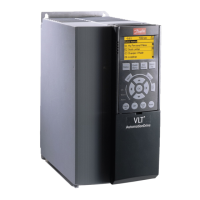
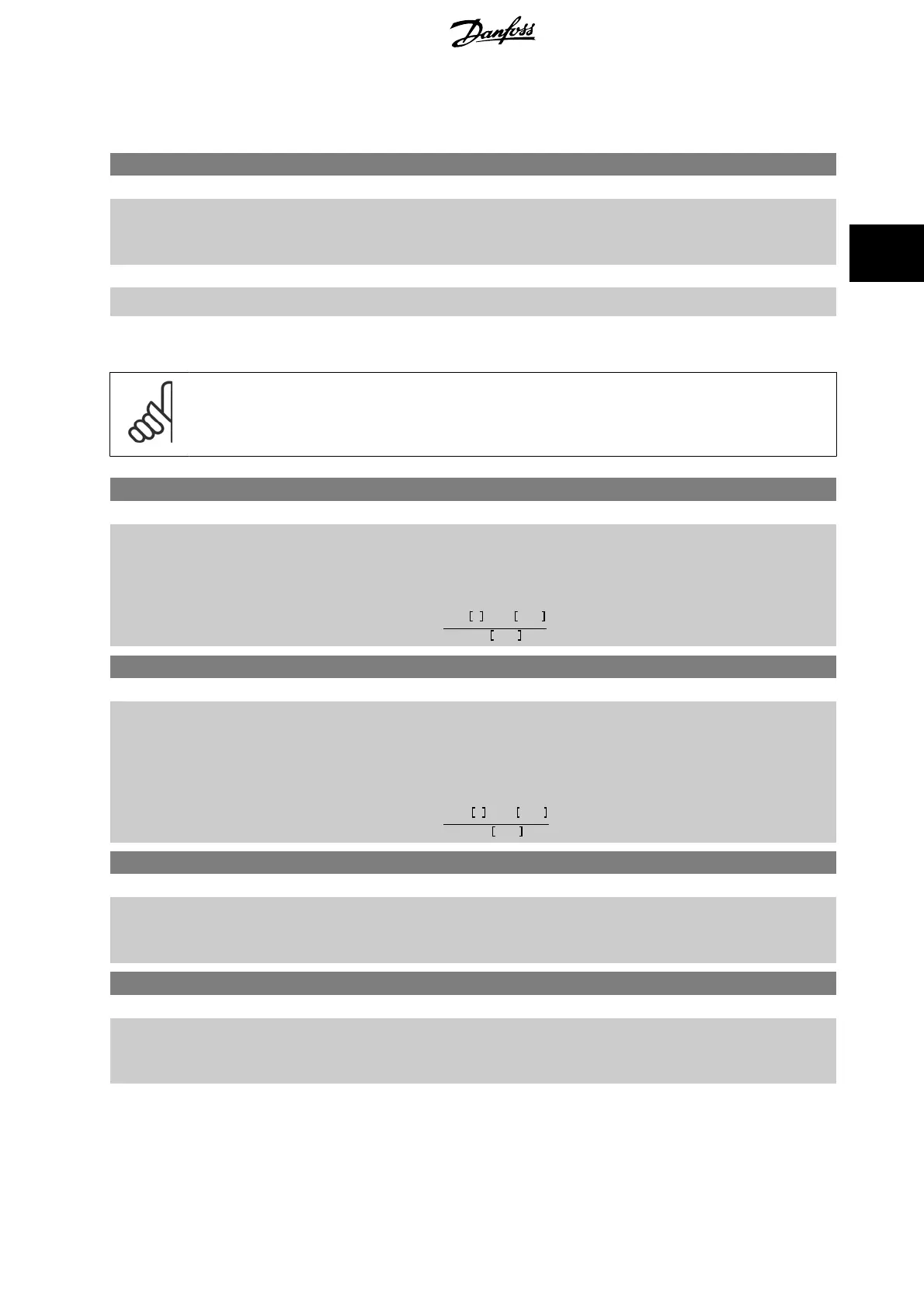